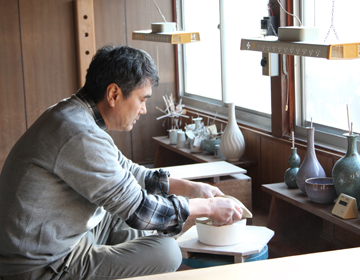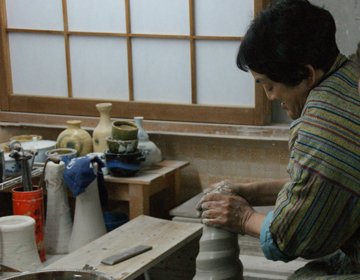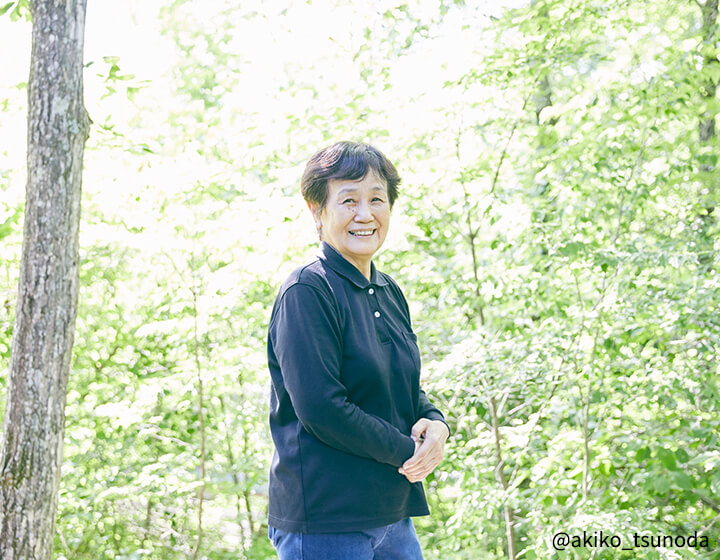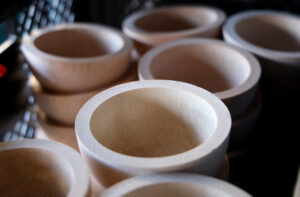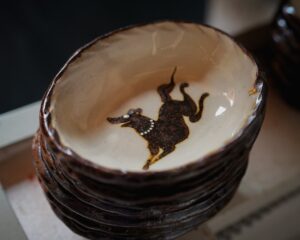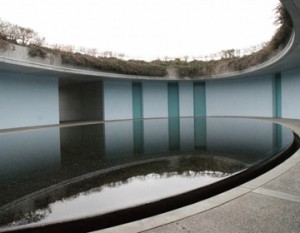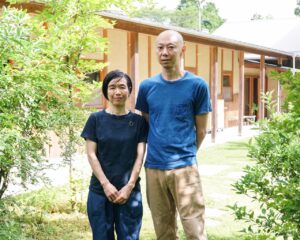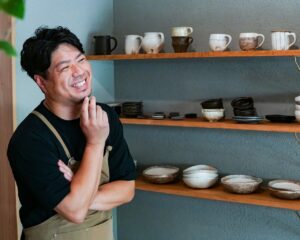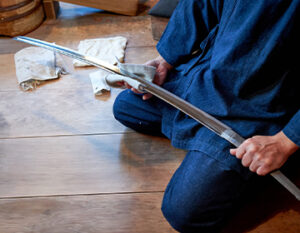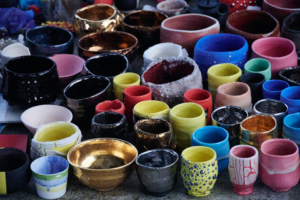Shion Tabata has her Shion Kiln in Karuizawa, Nagano Prefecture, one of Japan’s most famous vacation homes. In addition to his original creations, he is also energetically engaged in copying Ogata Kenzan, a well-known potter of the Edo period, and Kitaoji Rosanjin, a well-known gourmet and potter, and is a popular ceramic artist among people of all ages. We visited his studio to learn how he creates the warmth and gentleness that spills from his pottery and the charm that makes his pottery picturesque on its own.
Becoming an antique dealer out of a desire to “do what I love for a living
Originally from Kitakyushu City, Fukuoka Prefecture, Ms. Tabata met her current husband and moved to Kobe, Hyogo Prefecture. After the peak of her child-rearing years had passed, when she was in her late 30s, she began looking for a job to supplement her living expenses. She decided that she wanted to do what she loved anyway, so she looked for a job as an antique dealer, something she had been interested in for a long time. Although the peak of his career had passed, he was still raising his children and wanted to work on weekdays when they were at school. The only one that remained was Tanimatsuya Toda Shoten, an Osaka-based tea ceremony utensil dealer that has been in business since the Edo period. The company is said to be the largest antique dealer in Japan, but I had no idea about that at the time. I was offered an interview, and from there, things went smoothly, and I started working there the day after my interview.
Antiques learned from a great benefactor, Teiichi Yuki, a master of Japanese cuisine.

He worked there for about five years, more than half of which he was sent to help Teiichi Yuki, the founder of the Japanese restaurant Kitcho, organize his storehouse for the establishment of an art museum.
In the course of his duties, Mr. Tabata had the opportunity to hear Mr. Yuki talk about the time when he collected antiques, to actually touch them, and to learn about their splendor. This experience was one of the important turning points that led Mr. Tabata, who was almost a novice, to become interested in pottery making.
From a trivial experience to the world of ceramics
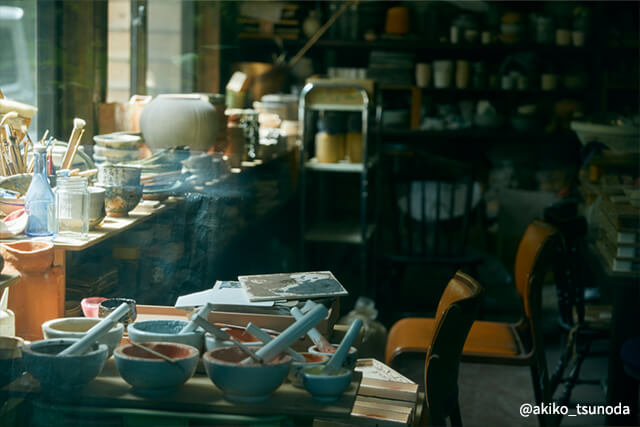
In this way, Mr. Tabata deepened his knowledge of the real world of ceramics, but when the ” Yuki Museum of Art, ” which he helped establish, opened in 1987, it was as if his busy life up to that point was a lie, and he found he had a lot of free time on his hands.
Around that time, he moved to an area on the border of Nishinomiya City, Hyogo Prefecture and Kita Ward, Kobe City. Several factors came together, including the completion of a major project he had been involved in and the longer commute to work, and Mr. Tabata decided to quit his job.
After his resignation, he wondered, “Couldn’t I make something that I had seen before,” as if to fill the empty time he had left after his retirement. For example, “It would be wonderful if I could hold a tea ceremony as a hobby using vessels I made,” he began to think.
It was something as trivial as that that inspired him to start making ceramics.
Failures in Ceramic Making
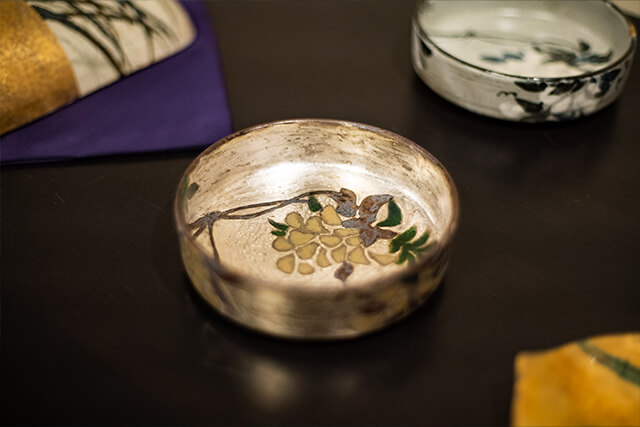
This is how Mr. Tabata’s pottery-making activities began. However, although he had some knowledge from his antique art experience, he had never taken a pottery class and did not understand even the basics of pottery. For the time being, he tried to make pottery only by self-study, but all he did was fail.
Meeting potter Sadamitsu Sugimoto and going his own way
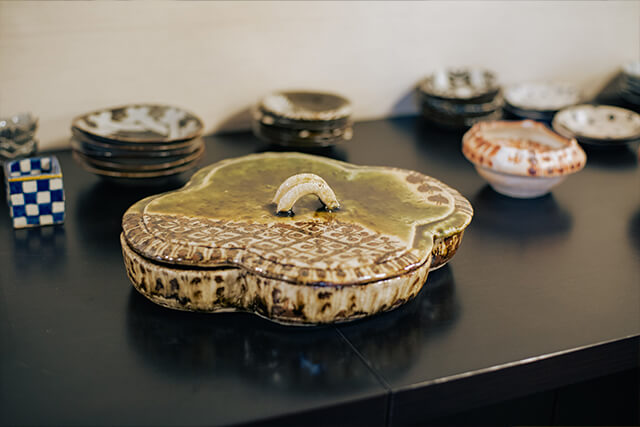
One day, Daikame Roshi, the abbot of Daitokuji Temple in Kyoto and a well-known tea master, introduced me to the potter Sadamitsu Sugimoto.
Mr. Sugimoto asked me if I would like to use the same kiln that he uses. If it is the same kiln, it will be easier to teach you if you don’t understand something,” and he suggested that I use the same type of kiln as the one he uses. Later, Mr. Sugimoto’s talent as a potter was widely recognized, and he became unimaginably busy, making it impossible to contact him at all.
When he purchased a kiln, he had high hopes that the kiln supplier would at least teach him how to fire it, but he was told, “I can’t teach you how to fire and fill a kiln because each potter has his own way of firing and filling a kiln. I read a book on pottery making, but it was of no help to me. I tried to use the highest quality glaze, but without knowing how to control the temperature of the kiln, all the glaze I had applied on the surface ran off. However, the kerosene kiln, which he purchased for about 1.5 million yen, was not a cheap purchase, and his desire to make vessels for use in the tea ceremony was stronger than anything else.
He continued to make pottery on his own, firing and firing, while receiving opinions from Mr. Yugi and Master Okame. This was another important turning point for Shion Tabata as a ceramic artist.
To be able to make a convincing copy of Ogata Kenzan.
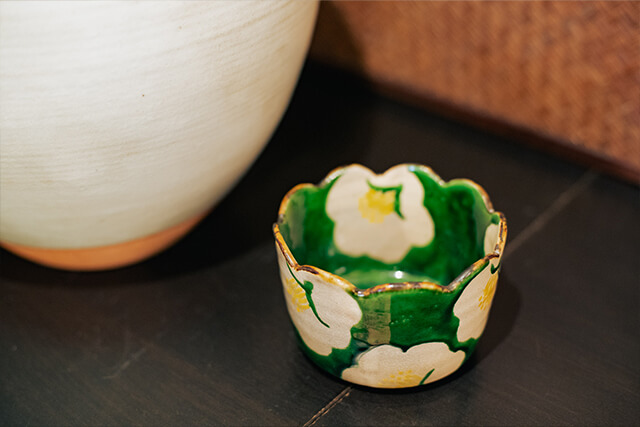
This turning point was the work of Ogata Kenzan, whom he had the good fortune to hold in his hands several times during the launch of the Yugi Museum of Art. In the style of Kensan’s works, which have many graphic elements, white makeup is applied and paintings and characters are drawn on the white makeup using a devil’s board.
From then on, he continued to draw tea bowls on the potter’s wheel, apply white makeup, draw pictures, and continue firing without limit. However, the work that came out of the kiln was far from what he had expected. However, he did not give up and continued to make and fire pieces, changing glazes and repeating trial and error over and over again. As a result, he gradually became able to produce a copy of Kenzan that he was satisfied with.
Shion Tabata as a ceramic artist
Every year since he started making pottery, Tabata had been presenting Mr. Yuki and Master Daikame with his best work of the year on their birthdays.
However, at that time, I was giving away the best work of the year, so I did not think I could always produce the same quality of work, and although I was grateful, I did not ask for an exhibition at a department store. In the meantime, Master Okame asked me, “Why don’t you hold an exhibition here?” and he introduced me to a gallery in Nagoya with which he was familiar. There, his works of Kensan and Rimpa style were highly appreciated, the number of exhibitions increased, and the name of “Shion Tabata” as a ceramic artist gradually became well known.
Valuing human relationships, he built an anagama kiln in Karuizawa.
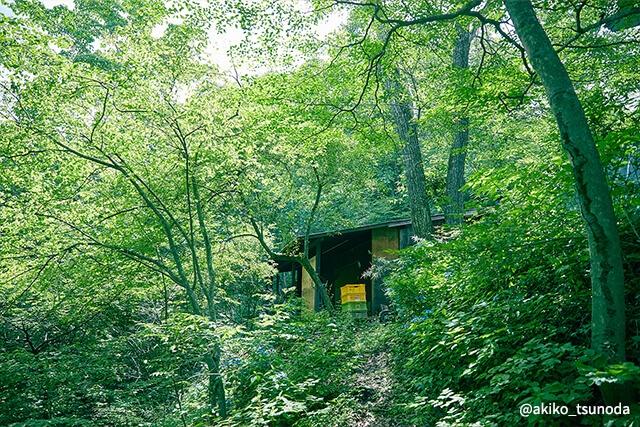
Some time later, in order to broaden the scope of his creations, Mr. Tabata decided that he wanted to build an anagama kiln for firing Iga Shigaraki.
However, most of the places where anagama kilns can be built are deep in the mountains or far from human settlements.
For Mr. Tabata, who became involved in pottery making through relationships with people, relationships with people are an important factor. In 2004, he decided to open a kiln in Karuizawa, Kitasaku-gun, Nagano Prefecture, one of the most popular vacation homes in Japan, where many people gather from all over the country.
Then, he came across a mountainous area of about 1,500 tsubo. After purchasing the land, he cut trees, made roads, and lived like a pioneer, gradually creating an environment for pottery making.
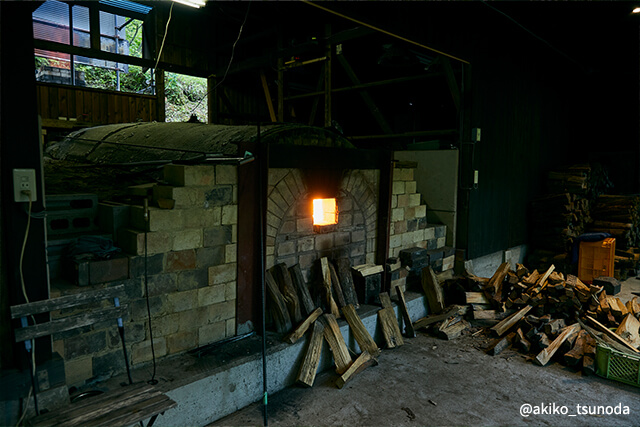
It takes seven days, or 168 hours, to fire a single batch of Iga-Shigaraki in the completed anagama. During this time, it is necessary to keep the kiln constantly burning wood, which is something that cannot be done by a single person. With the help of his partner, the two of them take turns sleeping for 12 hours at a time to keep the kiln burning. The income is not commensurate with the labor. Frankly speaking, if he had continued to make pottery in Kobe instead of moving all the way to the mountains, he would not have had to build a new kiln, and he would have had no financial or physical problems if he had just copied the Qianzan style that was taking off at the time.
However, if I had not come here, cleared the mountains, created the soil, built the anagama, and lived with this magnificent nature, I would not have been able to take a new step forward. He also says that the most important thing is that the hardships he experienced here were more than compensated for by the wonderful and gratifying encounters he had with people.
Blessed with and weaving relationships with people
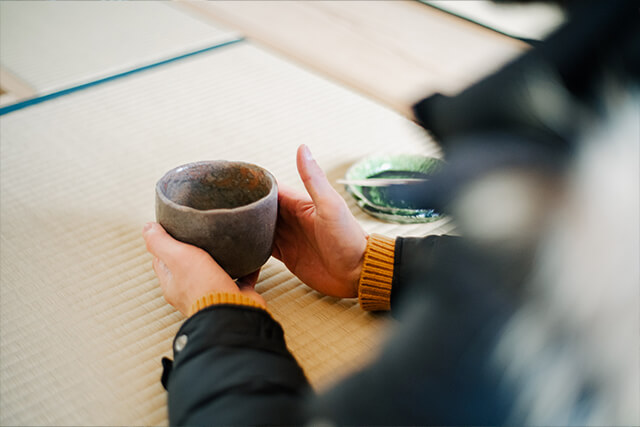
Mr. Tabata’s life as a potter has been blessed by the relationships he has had with people ever since he started working at Tanimatsuya Toda Shoten. The favors he has received from Mr. Yugi, Master Okame, Mr. Sugimoto, and other famous and wise people have been more than enough for him to spread his wings as a potter.
At the same time, however, it was also a source of great pressure for Mr. Tabata. If I produced a bad product, I would have disgraced the people who supported me,” he said. That is why I worked so hard to the bitter end,” says Tabata.
This desire was directly linked to the improvement of his skills and knowledge, and as a result, he has not only brought disgrace to the faces of his benefactors, but has also produced excellent works that make them proud of their achievements. Nowadays, his successors admire Mr. Tabata, and his back is followed by those who follow him.
Shion Tabata’s world of pottery is filled with the “gentleness” of human relationships and the “toughness” of pursuing what she loves.
